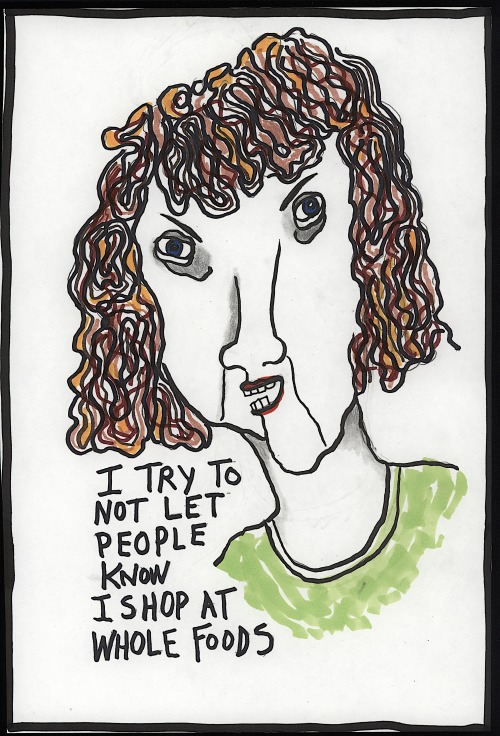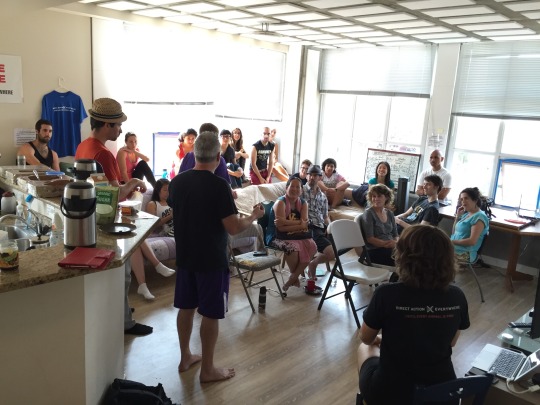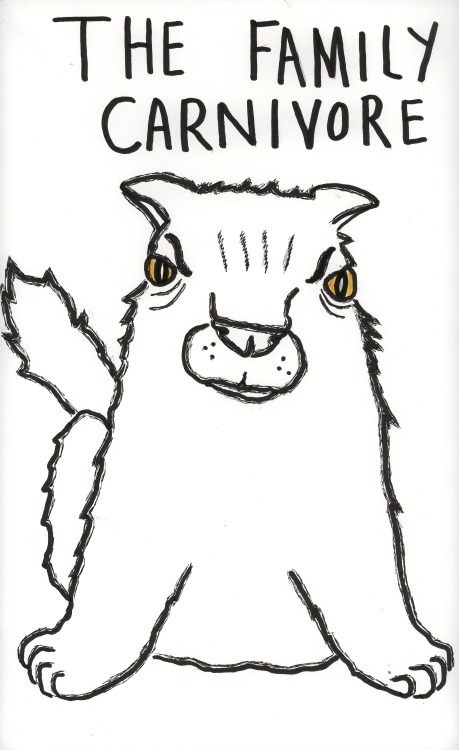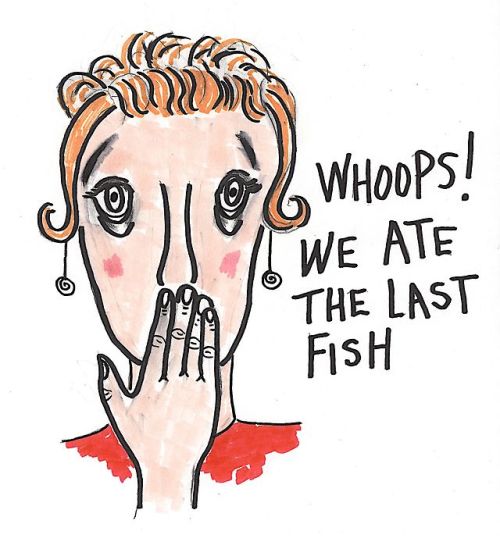
For those us who like to think of ourselves as “counter-cultural,” or “semi-counter-cultural” or even counter-culture sympathizers, Whole Foods Grocery is mortifying.
We KNOW we’re being duped by a big-ass corporation posing as, well, a non-big ass corporation.
“Would you like credit or would you like to make a donation for bringing your own bag?” the Whole Foods check-out clerk coos at us. Ahhhhhh.
We get to have the pleasure of painlessly giving 10 cents to a worthy organization.
So perfect. We don’t have to engage with a homeless person or even a bell-ringing Santa. We know our name won’t be added to yet another email list or junk mail list. And hell, you don’t have to be a genius to know 10 cents is a lot better than a dollar for the homeless person or $25 to Planned Parenthood. And all the while we get to feel good that we said “donation” instead of “credit” for bringing in our own bag.
The store is beautiful. All the colorful fruits and vegetables; all the “natural” foods; the seeming absence of Frito-Lay and General Mills, Whole Foods is a wonderful oasis from the grotesque American consumer culture.
At Whole Foods you know you’re not going to be visually assaulted by a huge display of ½ liter plastic bottles of Pepsi or by boxes and boxes of Froot Loops and Captain Crunch.
You know you’re not going to get hit with that slightly sweet, slightly rotting, slightly perfumey, overly-refridgerated grocery store smell as soon as you walk in the automated door.
And the dimmer, more “nurturing” lights? Whole Foods must have hired feng shui experts along with their architects to design the stores.
Oh, I must write something about the Whole Foods staff! Have you ever encountered a nicer group of employees? Ask where something is and a smiling and empathic “team member” will take you there. At the check-out, when they ask you how you’re doing, it seems like they might really want to know.
I love Whole Foods!
It’s the “Garden of Eden” of grocery stores, a place I’d like to go and hang out even if I didn’t need to buy anything.
When I shop there, I’m imagining I’m getting to kick all those mean nasty corporate kings in the shins, the ones who have inflicted all the plastic food-like substances on the world, causing a blight of Type 2 diabetes and obesity. I also spit on Wall Street while I’m pushing my cart (with the smoothly functioning wheels) past the big, wholesome-looking bulk bins of brown rice, raw almonds and the rest. Whole foods appeals to the hippie in us all.
But wait! Did you know that the brand with the lovely bucolic, “natural” looking label, Muir Glenn, is owned by General Mills? That the ooooh so natural toothpaste, Tom’s of Maine, is owned by Colgate-Palmolive? That Odwalla, you know, the company that sells freaking carrot juice, is owned by Coke? That the most holy of holy line of environmentally-friendly cleaning products, Mrs. Meyers Clean Day, is owned by SC Johnson? And finally did you know that Stacy’s All Natural Pita Chips is owned by yes, Frito-Lay? Real hippies know these things and real hippies know that although the produce section in Whole Foods kind of looks like a farmer’s market, it isn’t.
No, I don’t enjoy being manipulated and duped by General Mills, but Muir Glenn tomato sauce is fat free and has the lowest sodium content I have been able to find. Sure, the Odwalla carrot juice is made by Coke, but it’s still carrot juice.
I also don’t enjoy being duped and manipulated by the Whole Foods store itself but even if they weren’t beautiful, they often have the stuff I want, especially if I’m in, say, Memphis, Tenn. where there aren’t a lot of other “natural” markets.
Whole Foods is the “miracle” of what the French philosopher Guy Debord calls “The Spectacle Society,” where everything becomes an opportunity to make a buck. You’ve got a bunch a people who hate the multi-national food corporations? Well, then you start up a multi-national food corporation that is ostensibly anti-multi-national food corporations. Natch.
Whole Foods answers to stockholders, just the same as Nabisco, not to the gods of democracy, brotherly love and the Gaia principle. It’s listed on the Nasdaq as WFM.
If there’s anything that jolts the Whole Foods customer back into reality it’s the Whole Paycheck prices. Real hippies can’t afford Whole Foods.
I once saw an extremely sad yet at the same time extremely ridiculous note on a message board at Whole Foods. (Isn’t a food market message board downright homey?) Anyway, it said, “We’re seniors and we can’t afford Whole Foods prices. Please lower your prices. We want to eat healthy too!”
Hello?… Where do you think you are? The Garden of Eden of grocery stores?? Step aside old lady — make way for the paying customers. “Do you want ‘credit’ or ‘donation’ for bringing in that bag?”
— A Vicious Vegan blog post —









